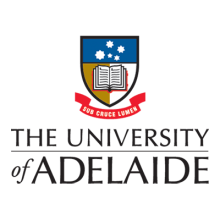Australia’s new research commercialisation fund will pay for itself if just 5 per cent of its caseload achieves major profitability, according to the body representing the country’s science, technology, engineering and mathematics sector.
And if the government delivers just half of the A$1.6 billion (£866 million) it has pledged towards the fund, the national economy could still receive a A$17.6 billion boost.
Science & Technology Australia (STA) has based its estimates of the scheme’s potential returns on the successes of its recently installed president, neuroscientist Mark Hutchinson, who heads the Australian Research Council (ARC) Centre of Excellence for Nanoscale BioPhotonics at the University of Adelaide.
In a speech to be delivered at the National Press Club on 2 March, Professor Hutchinson will explain how bankrolling market-friendly research can deliver a 23-fold return on investment. “At my own research centre, we had an initial Australian government investment of A$23 million [that] we used to leverage further investment from industry, state governments and philanthropy,” the speech says.
“Over the past seven years, we’ve turned the initial A$23 million investment into 16 start-ups with a combined market capitalisation and market value of A$519 million.”
In an enthusiastic endorsement of the government’s research commercialisation agenda, Professor Hutchinson will highlight the “scale of the returns” Australia can expect from the fund. “Too often, Australian researchers have made a world-first discovery that could turn into a job-creating success story only to hit a wall of disinterest from potential financiers,” he was due to say.
“They just can’t get the finance to take it to ‘proof-of-concept’ and ‘proof-of-market’ stages. Countless promising Australian breakthroughs have been left to languish in the lab, or our intellectual property has been snapped up abroad.”
But the fund will only reap its full potential if researchers envisage commercial applications of their work from the outset, Professor Hutchinson will warn. “We need to train a much bigger community of ‘bench-to-boardroom’ scientists…who can take exciting lab bench discoveries into start-ups, industry partnerships and to venture capital investors.”
In a pre-budget submission, STA sought A$3 million to fund commercialisation training for scientists. The group has also asked the government to increase funding for the ARC and the National Health and Medical Research Council to A$1 billion each, up from between A$800 million and A$900 million at present.
Register to continue
Why register?
- Registration is free and only takes a moment
- Once registered, you can read 3 articles a month
- Sign up for our newsletter
Subscribe
Or subscribe for unlimited access to:
- Unlimited access to news, views, insights & reviews
- Digital editions
- Digital access to THE’s university and college rankings analysis
Already registered or a current subscriber? Login











